Public Service Broadcasting’s J Willgoose on his new lockdown record and making generative music
With lockdown restricting full-band recording for PSB’s next album, and without his key kit, Willgoose found himself adrift, with only a selection of outdated and underused tech in his home studio. With this, however, he crafted an extraordinary solo record as Late Night Final.
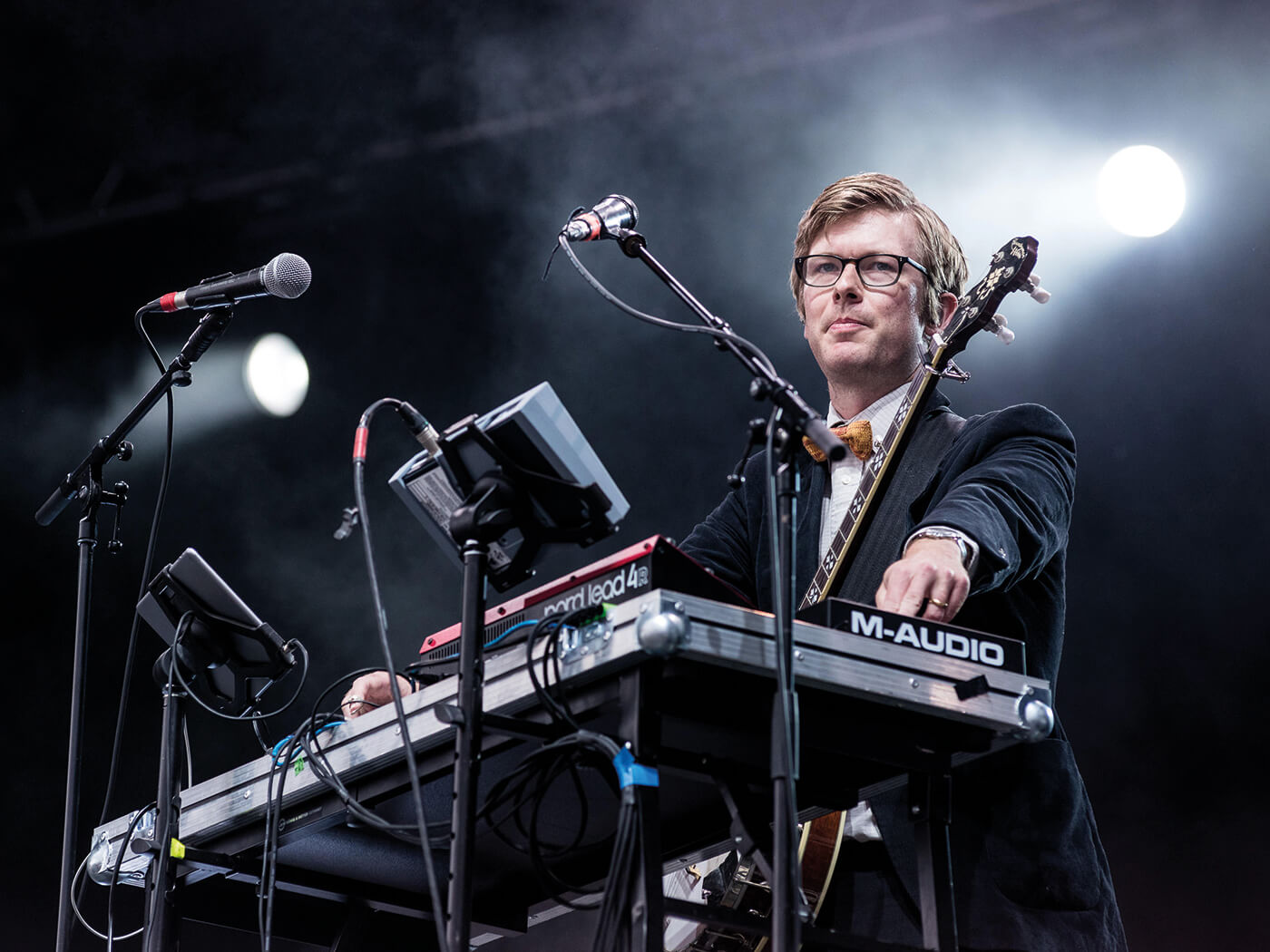
Now well known as bowtie-sporting frontman of Public Service Broadcasting, John has been a music technology aficionado for years. Image: Alamy
Having sonically explored a diverse range of concepts across three dizzying records, Public Service Broadcasting have developed a reputation as one of the UK’s most unique bands. They are instantly recognisable for their driving, synthetic sound and for incorporating vast quantities of archival audio material. J Willgoose (aka John Willgoose) is the group’s lynchpin, first establishing the vehicle as a solo project, which evolved with further members.
The group exploded into the public consciousness with the release of their critically acclaimed sophomore album The Race For Space in 2015, a record which charted the global tension and optimism of the space race. This was followed by the 2017’s more down-to-Earth Every Valley which delved into the cultural history and legacy of Welsh mining communities. Willgoose and the rest of the band had been due to deliver the as-yet-untitled fourth album in 2020. However, a global pandemic curtailed those plans, and lockdowns were enforced at such a speed that Willgoose found himself estranged from his familiar gear.
“The reason we couldn’t record that fourth Public Service Broadcasting album was that all of my gear was not in this country, and actually in a very non-accessible country.” John tells us “So I didn’t have the option of using my newer kit. All I had was the stuff that I’d stopped using, or wasn’t used for PSB.”
As the weeks passed, John decided that the time was right to pursue something new – a solo project. This was something he’d been itching to undertake for a while. The result is the organic, hypnotic debut album from his new guise as Late Night Final, A Wonderful Hope.
“When I started making this record it was pretty much a blank slate,” John tells us “The only thing I had in my head was that I wanted to get away from working with a computer and get a bit more hands-on, with more of a live, reactive feel. I wanted more improvisational elements and humanity. But I wanted it to be machine-led, rather than computer-focused. The way I write with PSB albums allows for all kinds of things that aren’t the norm with songwriting, and I can use my imagination, and using other material as a springboard is incredibly inspiring. But making those albums has been very labour intensive. Even before we write a note of music or record anything. So I just wanted to do something that was a bit less intense.”
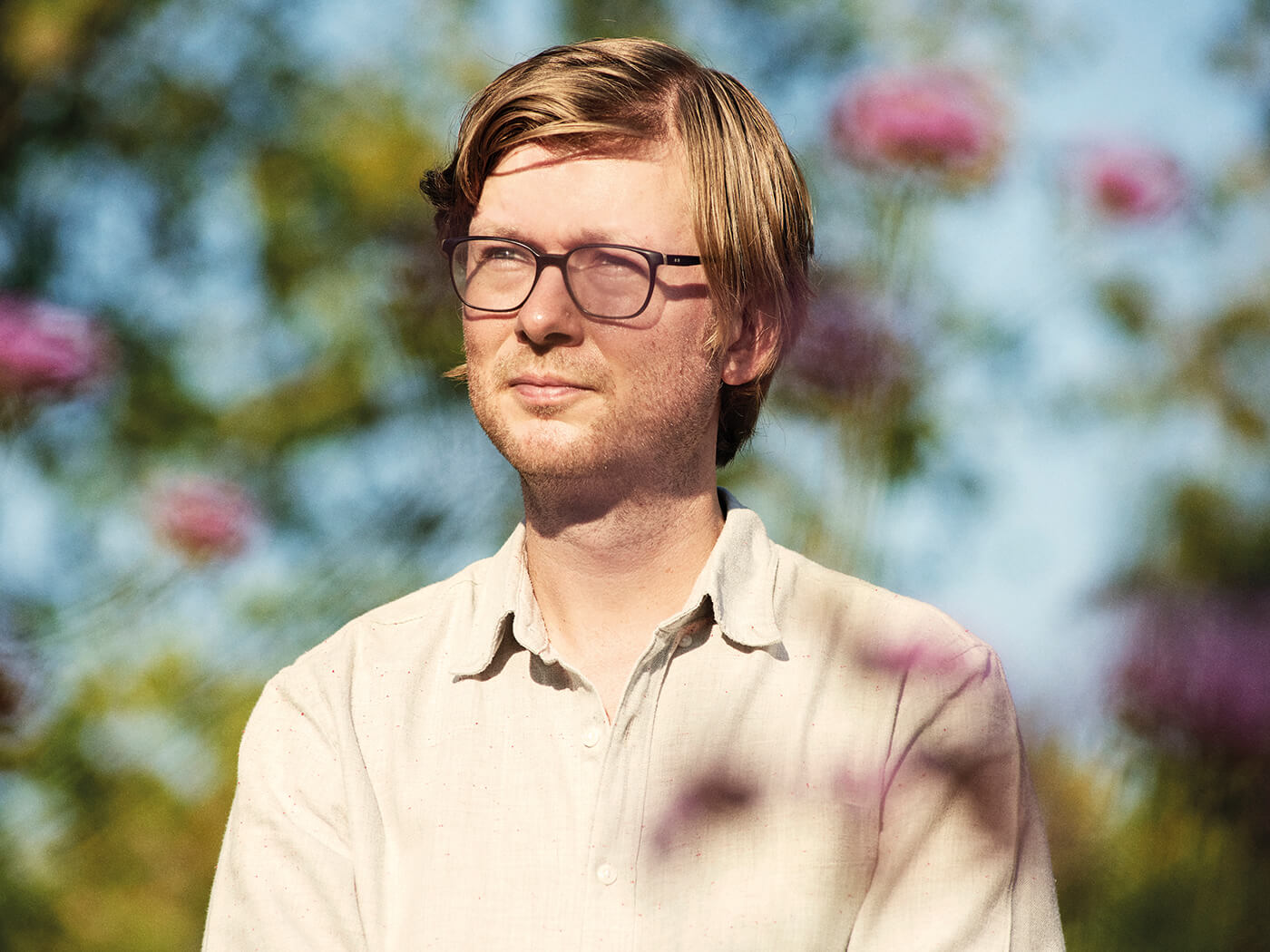
The war room
John was forced to unearth what tech he still had access to, and assembled an eclectic gear assortment. “The main thing ended up being the Nord Rack 2, which I’ve had since 2005.” Says John “I bought it off a bloke in an estate in Tulse Hill. I used it intermittently on The Race for Space, but then I superseded it with a Nord Lead 4. So that got a dusting down. I discovered lots of new tricks and depth to it that I hadn’t used before, and harnessed some more of its edit-ability and tweak-ability. It’s got some really amazing percussion and drum sounds in there, too. I always liked them, but I didn’t realise you could totally manipulate them, I thought they were simple samples. So there was a lot of re-discovery. There was an old massive Roland rack synth too, the XV-5080 which I’d bought second hand off eBay really cheaply. I just needed something ‘extra’ and so that played a bit of a part.”
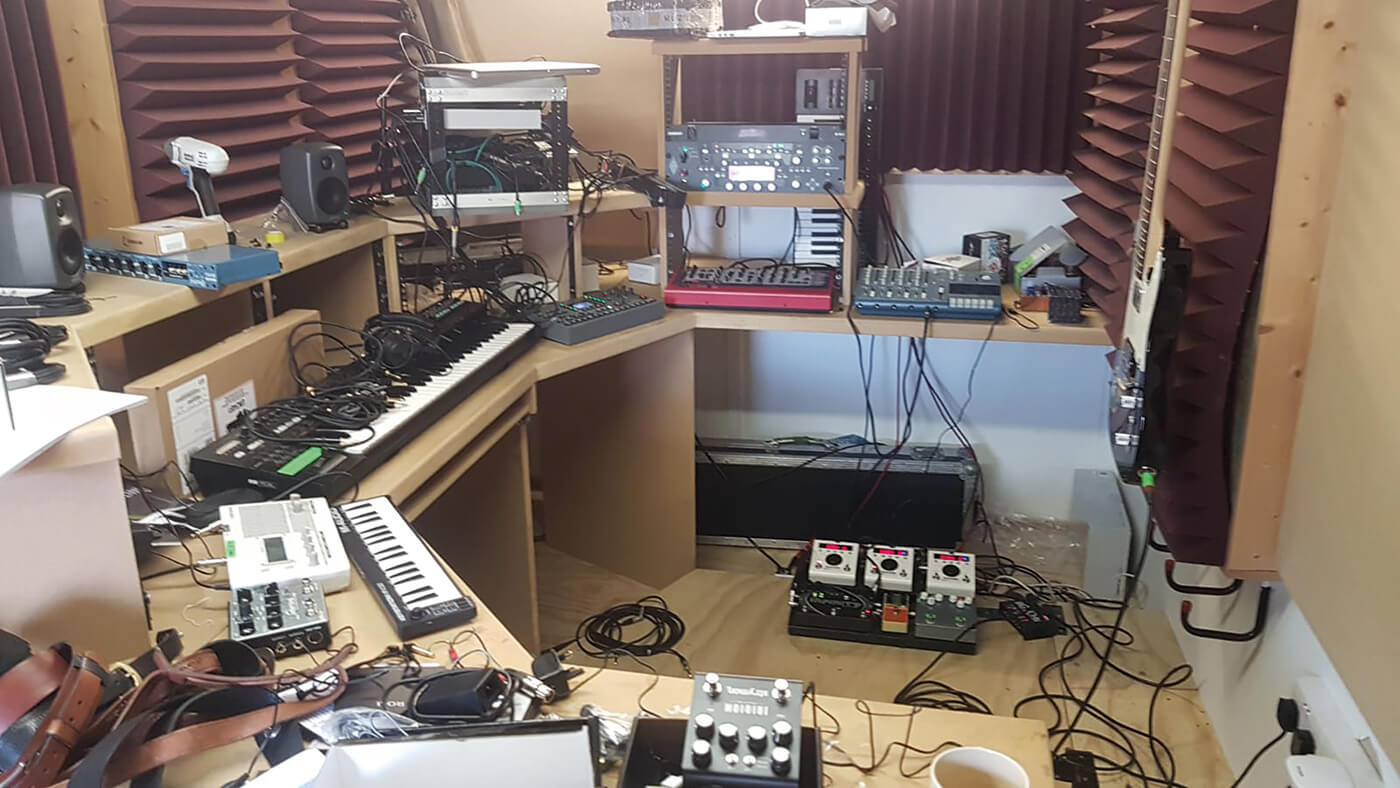
“The Elektron Digitone was perhaps the most recent piece of tech I used.” Willgoose enthusiastically continues, “I’d brought that home with me from the PSB sessions because it fit in my bag. That’s the only thing that made it back. I used that for some of the synth parts and a few of the arpeggios. It doubled with the Roland on some solo drum parts too. I didn’t really use the sequencer on it that much.”
The rest of John’s kit for the record consisted of older tech he’d picked up when he was dabbling in the mid-2000s. “I brought out my Yamaha REV500, which I was amazed to see still worked. The TC Electronic D-TWO [delay] which ended up being a big part of the sound of the record actually. I really enjoyed working with a hardware delay. I set up a couple of MIDI controls with it to vary the feedback and slightly change the depth of the modulation as a sort of manual LFO to give it a bit of movement and interest. I had the Elektron Octatrack here, which I used to sequence pretty much all of the record. I also had a very, very old Yamaha QY-70, which amazingly still worked. I used some of its pads and percussion sounds, and ran some of that through effects pedals. It only had a stereo headphone out, but I managed to pan it left to right and get two outputs out of that, and ran the signals through various bits and bobs.”
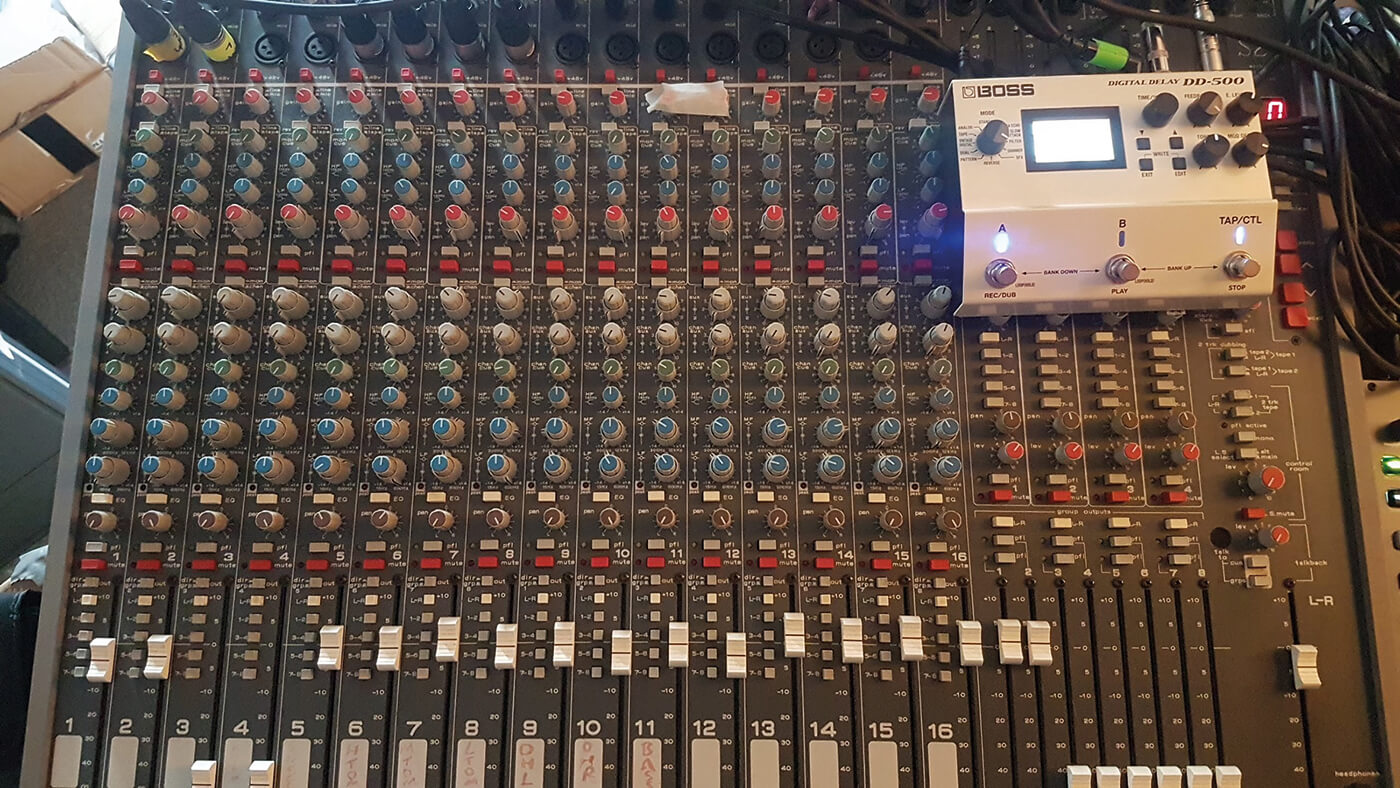
All of this kit was being mixed with an antiquated Allen & Heath mixer, though it was marketed and sold under a different name “The S2 mixer was made by Allen & Heath for a company called Thatched Cottage Audio. I bought it second hand back in 2006, I think for £150. It’s served me well since then. I used it on Public Service Broadcasting’s The War Room EP and parts of the first album. But since then it’s been gathering dust. But it still works, and it was nice to have something that I was able to drive a little bit harder. It has EQ on every channel, and it has six Aux sends. So with this array of gear, the sound kind of came together. There was a lot of signal conversion going on, as you can imagine – the audio path was not pristine. But that’s kind of the point of it really.”
So, no computers at all then? “Well I cheated a little” John admits, “There was a computer hooked up to a MIDI interface to do a bit of MIDI filtering and MIDI routing. But I wasn’t writing with a computer. I wasn’t staring at a screen and dragging stuff around. It was purely there as a MIDI router, and then to record stuff into. I’d record live takes as they went. And that was it. The audio was straight to stereo and wasn’t multi-tracked. It was basically a case of pressing play and seeing what we get. This is a very different approach to making music than what we do in Public Service Broadcasting. I found it liberating.”
A voice from beyond
With these strange gear bedfellows corralled into place, John began songwriting – initially trying to lay down some textures and drones. During this initial period, an unexpected voice pointed the way to the record’s overriding theme – human connection. “I was recording in guitar drones, trying to get some nice moods worked up.” Willgoose remembers “I had a little sequence written that I was building upon, I was messing around with the Chase Bliss Blooper Pedal. I didn’t really know what I was doing with it – as is often the case! I pressed the Undo button at an opportune moment, and this voice chimed in saying “Thank you for ordering Blooper!” Oddly enough it perfectly in time and in key with the music I was working on. I didn’t manipulate the pitch. It was one of those moments that was just like “Where’s that come from!”
“I just couldn’t believe it, and I didn’t really know what I’d done to trigger it, so I just instantly recorded the “Thank You” into the sampler. That really set the tone for the record,” John reflects “When you set up a studio for yourself, with all kinds of stuff happening live in the room, you’re more likely to stumble upon these happy accidents. I mean, they can happen on a computer as well. Frequently I’ll drag things into the wrong track, and something weird will happen. When it’s more tactile, and you’re re-discovering how your gear works, more unexpected sounds can present themselves. It was vindication for working this way really.”
This opening track was aptly titled Thank You and set the tone for the record’s four-track exploration of the craving for humanity, that many of us can relate to his year. “I didn’t really know what I was making at the time, but the album does sort of point toward a yearning for more humanity. It’s a strange time to be making a record, that’s for sure.”
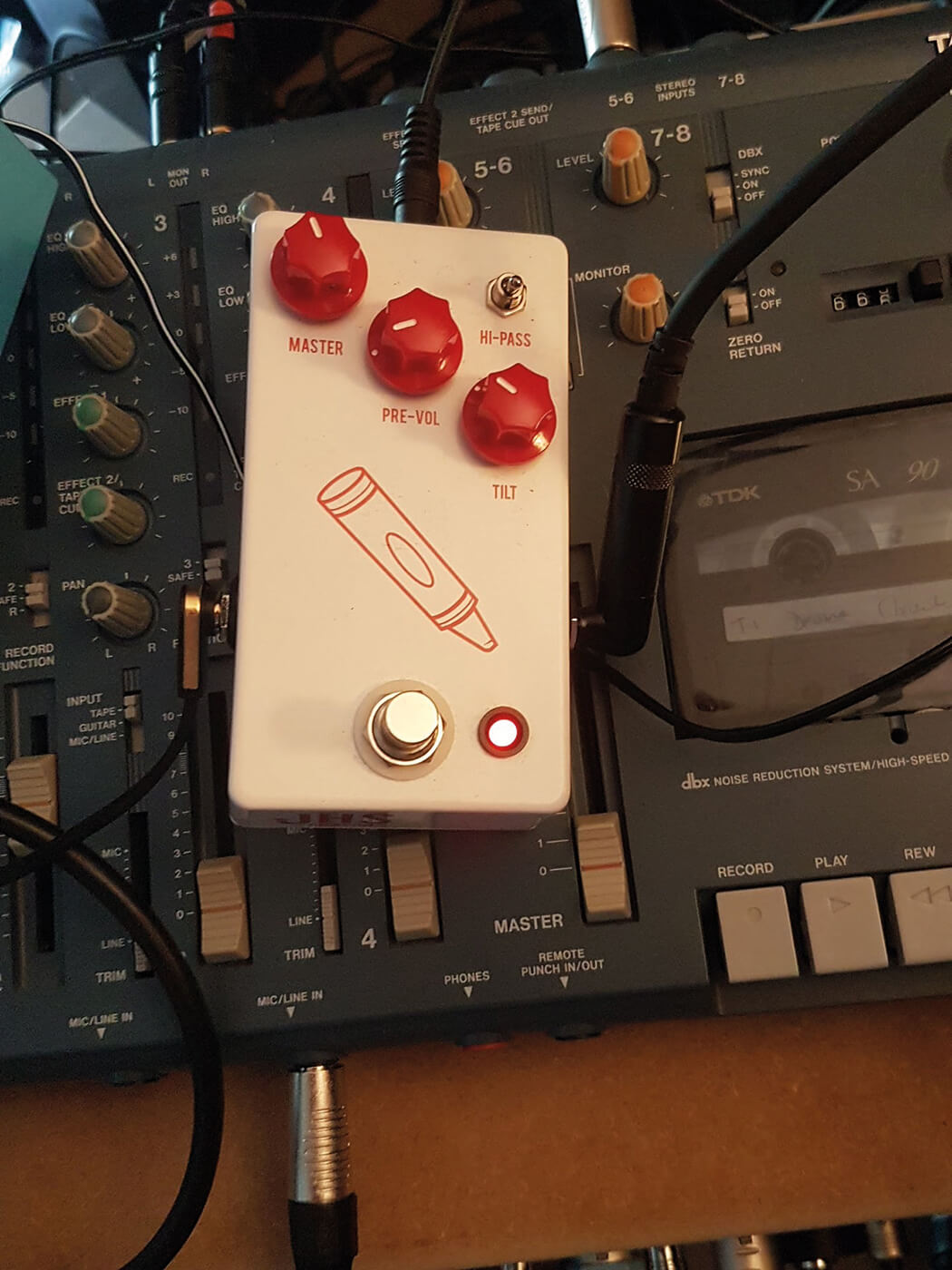
Natural variations
In tandem with that theme, came John’s desire to experiment more with chance and random music generation, “I think to get a bit of the human element of randomness, when you’re playing on your own with machines, you can lose sight of that.” John admits “I wanted an improvisational aspect to it. I know that seems to be entirely how Brian Eno writes these days – programming a sequence and where it gets interesting he’ll record and edit. But it was almost listening to his way of working that inspired me to try it myself. I set a probability trigger and input the parameters to operate within this range of notes, in this key, within these octaves. Even just little drum variations, when you’re working with only 8 tracks of MIDI, it just helps to be able to add some colour. It definitely brought a lot more humanity.”
This methodology also kept the process fresh for John himself. “Every time I did a take, it was different, which is kind of how it should be really. It’d be a bit dull if you were just doing the same thing again and again. I was speaking to a lecturer at an audio college, and he told me that he asks his students for a show of hands for if they’re in a band, and nobody puts their hands up, because they’re all just doing it on laptops in their rooms. There’s nothing wrong with that, but it struck him that all these glitchy random sounds and elements of probability are very en vogue in electronic music. He figured it was because they were reaching to get the natural variations that would otherwise happen with other human beings. I thought that was very perceptive.”
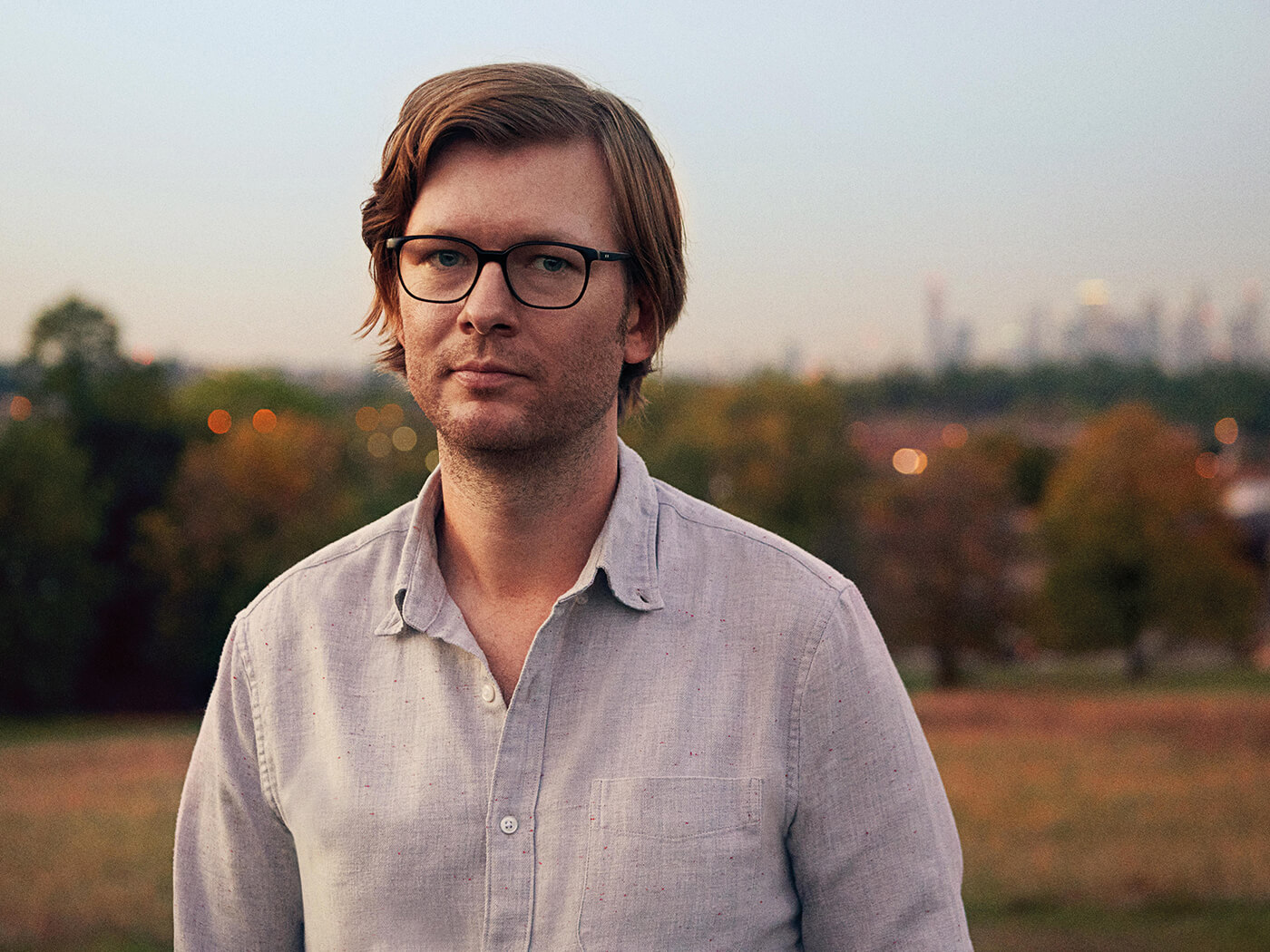
The human touch
We wonder if John found the process more creatively inspiring using hardware over software “Yeah definitely.” He immediately confirms “It was an approach I was actually trying to work on for the next PSB record. I’d bought a couple of [Roland] Space Echoes and a few more things that I was hoping I’d be able to use to get a bit more movement and energy onto those records. So I was already thinking of working more outside the box. I just had everything orbiting a little Korg NanoKontrol with 8 faders and 8 pots, and I’d rigged up some of the buttons to do various changes on bits and bobs. That simplicity was so refreshing. I was using the arranger on the Elektron, but I kind of had it loop until I was ready to move on. So I was still dictating when I was ready to progress from section A of a song to section B.”
In place of PSB’s heavy use of archive material, John lightly sprinkled some real-world samples that he had recorded in his local area during the lockdown. “I wandered around our local park and just captured some natural audio; there are a few sounds of kids playing – a sense of the lid being taken off slightly and a release of pressure. I thought it was interesting and important to have that sound on the record. It just instantly changes the feel. Working with sound artist Teddy Hunter as well on the track The Human Touch, was much more pronounced and artificial. I was slicing up the vocals she was sending through to me. It’s all about adding those extra levels of humanity to the music. It gives it that extra personality that it might not have.”
Overall, the album took three months to create, interrupted intermittently by John’s domestic duties as a new father. “I started in late April and finished in early August, and in and amongst making the album I was learning how to care for a little human. The album was mastered by Katie Tavini actually. She did Nadine Shah’s record, and I just thought I’d give her a go. She did a really great job. But It was all mixed here on my tiny little Genelecs. Hearing it on my proper speakers, when I got my gear back was quite astonishing.”
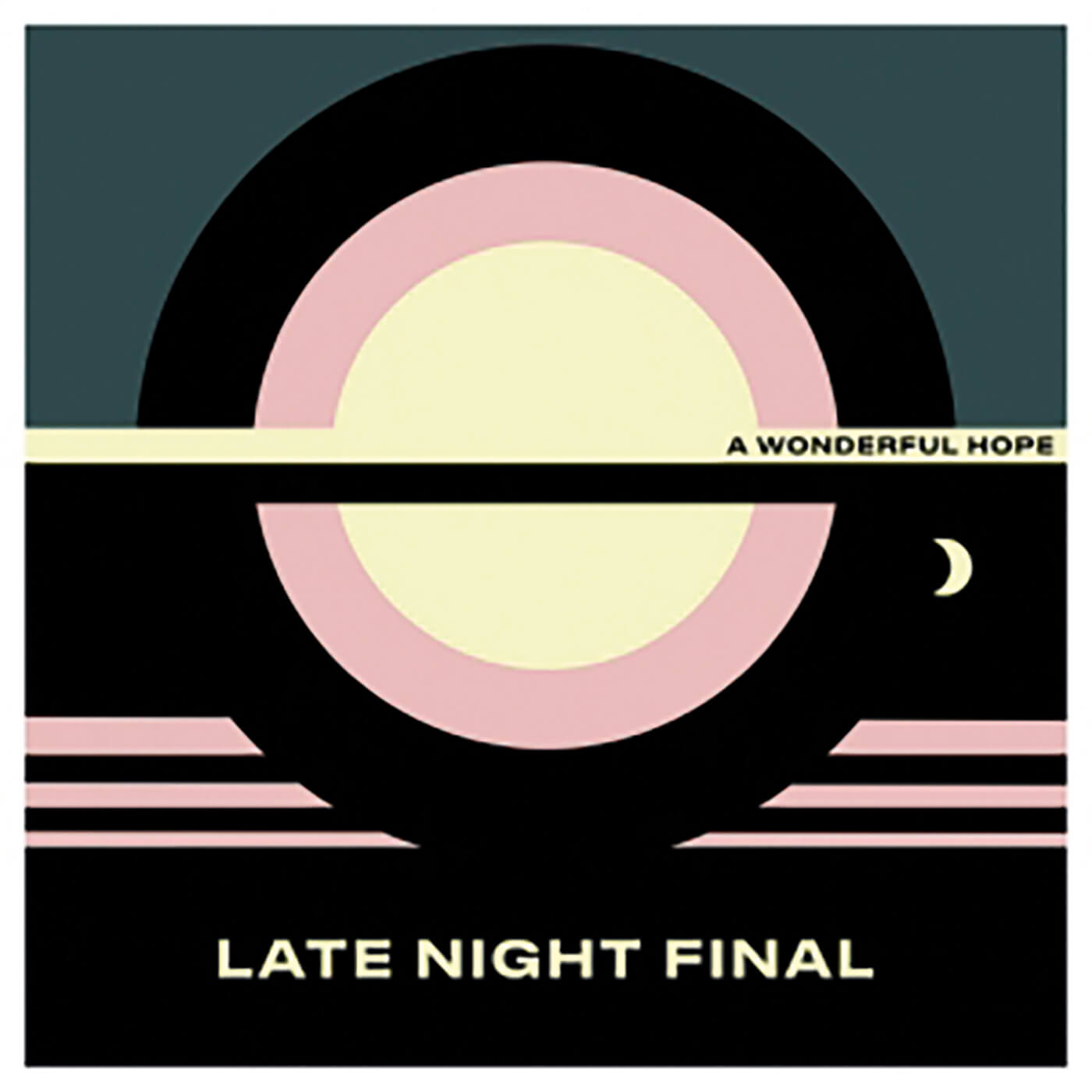
Going solo
A Wonderful Hope represents a project conceived, created and finalised in lockdown, with the pressure of being in a full band temporarily lifted. But we wonder if John will continue producing music under the Late Night Final monicker in the future, and even performing the record live, should the situation permit? “Well, I think it’d be nice to try. It’d be good to get some of the hardware out there and run a bit wilder with some of the improvisational aspects. I think it’d be really good fun to try that. But you’ll have to wait and see. Part of the reason the record changed from being quite an ambient thing to a much more pulsey, electronic thing was envisioning it live. Very late at night, I think I knew where I’m at. It’d be nice to bring it full circle and see if it actually does work in that environment.”
John admits that this is something that he’d wanted to get going for a while. “It was liberating, and I’d certainly like to keep Late Night Final going – It’s not going to be a one-off thing. It’ll run concurrently with the Public Service Broadcasting work. We’ve been working on the new album for three and a half years, so to make an album in a matter of months is quite a good tonic. I don’t want to lose that.”
So for those inspired by this quick turnaround, and bold approach to gear selection, what advice does John have for those who might want to create their own lockdown masterpieces? “One thing that has stood me in good stead is actually the fact that I’m not really a talented musician in the sense of being a virtuoso. My talents are fairly average across the board. But one thing stands anyone in good stead is having a sense of determination and keeping on going with something, even if you’ve had a bad day or think nothing’s going to happen today. Get something finished and get it out. It’s never going to be perfect so rather than waiting until you think it’s perfect, accept that you can’t fix everything. Many really talented people don’t seem to have that ability to let go of a project and finish stuff. It’s frustrating. Just get it done and see what happens with it. And don’t wait for everything to be perfect.”
The other side
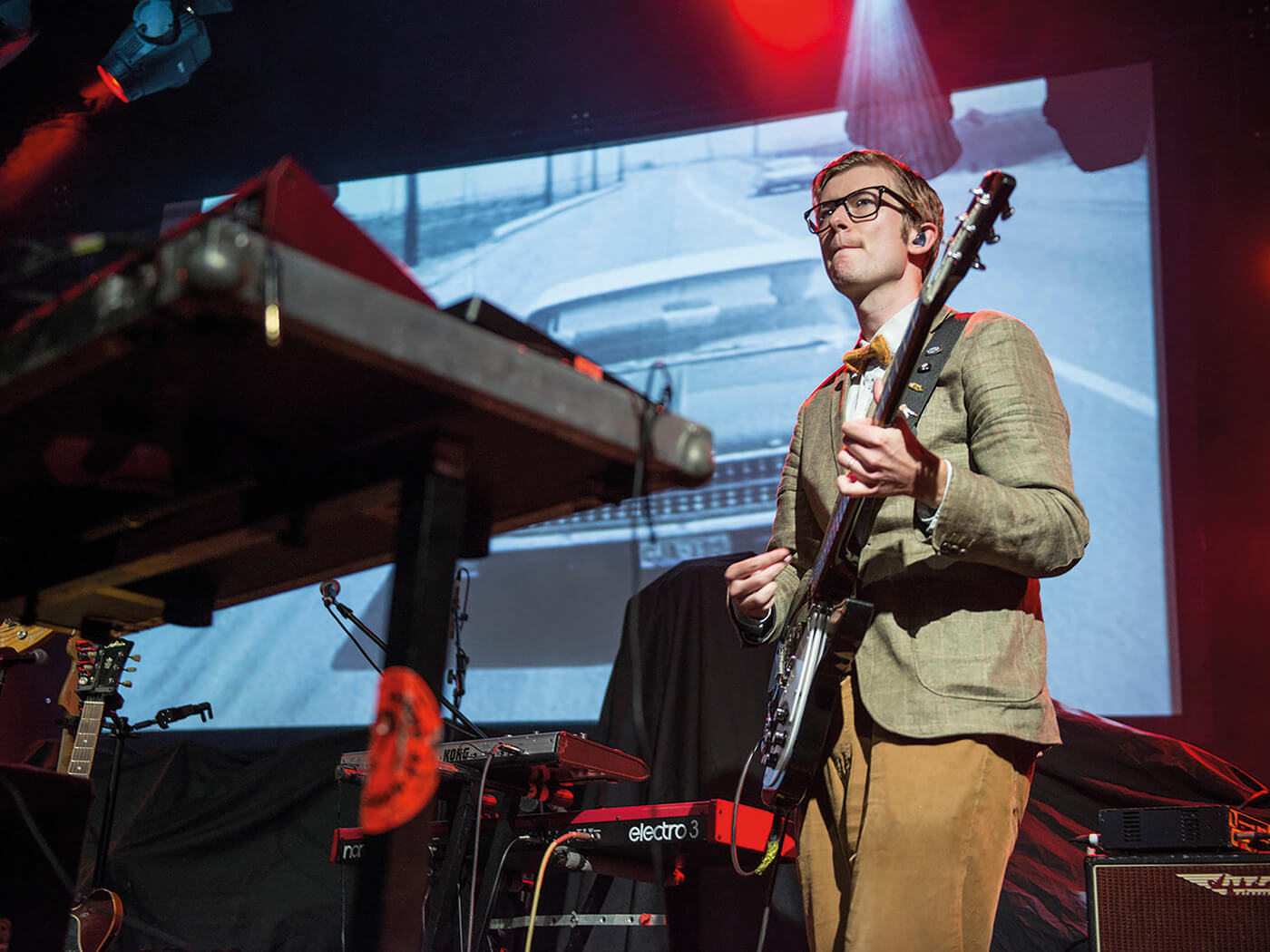
John is predictably tight-lipped about what we can expect from the fourth Public Service Broadcasting record, though is hopeful that it will be completed early in 2021 “It’s getting there, it’s recorded. We did that in September, which feels more and more like a miracle. It’s just a case of getting it finished and getting some of the collaboration aspect locked down. We’re tinkering with it, but the overall sound is there. There’s a fair bit of piano on it at the moment. A lot of things change in that final tweaking though. Hopefully, it’s not too far off.” We eagerly await the result.
A Wonderful Hope by Late Night Final is out now via PIAS Recordings.
For more artist features/interviews, click here.